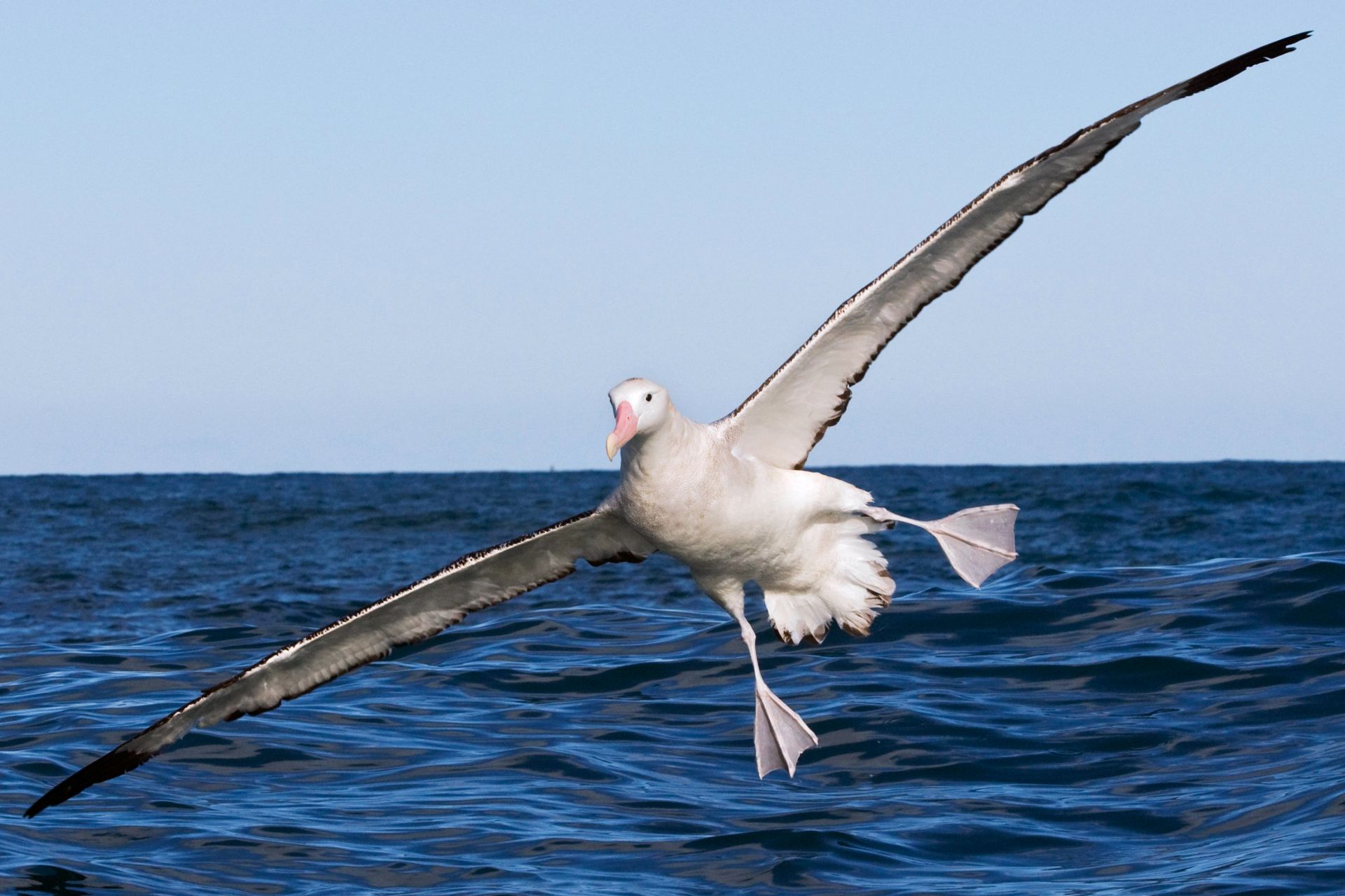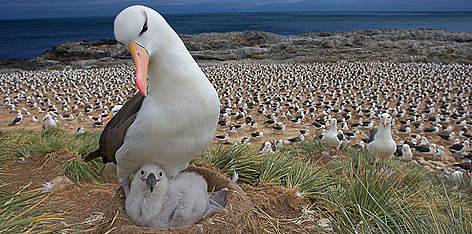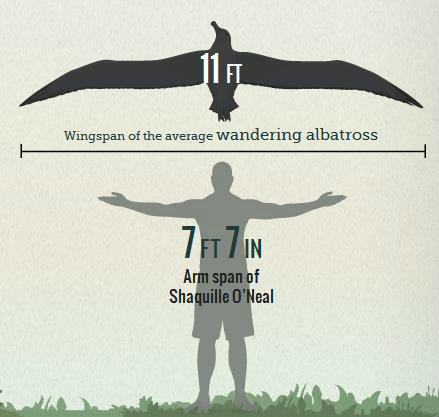Marine Animals: Albatross
Description
Large seabirds known as albatrosses were once thought to be an omen of good luck by sailors. Samuel Taylor Coleridge’s famous poem The Rime of the Ancient Mariner recounts the tale of a sailor who shoots an Albatross at sea and brings misfortune to his ship and crew.
<figure style="width: 1920px;" class="wp-caption aligncenter">
 <figcaption class="wp-caption-text">A wandering albatross with wings spread wide, from: https://www.dkfindout.com/us/animals-and-nature/birds/wandering-albatross/</figcaption></figure>
<figcaption class="wp-caption-text">A wandering albatross with wings spread wide, from: https://www.dkfindout.com/us/animals-and-nature/birds/wandering-albatross/</figcaption></figure>The name albatross may refer to several different species of large seabirds in the family Diomedeidae. The largest species, the Wandering albatross Diomedea exulans, has a wingspan of 11 feet, allowing these birds to conserve energy by gliding on gusts of wind for hours without flapping. In calm weather, Albatrosses can be seen floating on the surface of the ocean, where they spend the vast majority of their lives, only returning to land to breed.
<figure style="width: 472px;" class="wp-caption aligncenter">
 <figcaption class="wp-caption-text">Albatross parent and chick, image from naturepl.com/Andy Rouse/ WWF</figcaption></figure>
<figcaption class="wp-caption-text">Albatross parent and chick, image from naturepl.com/Andy Rouse/ WWF</figcaption></figure>Albatrosses are primarily found in the Southern Hemisphere around Antarctica, Australia, South Africa, and South America. Only 3 species are found in the North Pacific Ocean. These seabirds can live for 60 years, becoming sexually mature at 5 years, but usually beginning to breed at 7 to 10 years old. Their diet consists of cephalopods like squid and octopus, crustaceans, and fish. They are also known to follow ships to feed on scraps. Albatrosses are capable of diving up to 5 meters to catch their food.
<figure style="width: 439px;" class="wp-caption aligncenter">
 <figcaption class="wp-caption-text">Wingspan of a wandering albatross compared with basketball great Shaquille O’Neal, image from: Discovery https://twitter.com/discovery/status/181491161293275137</figcaption></figure>
<figcaption class="wp-caption-text">Wingspan of a wandering albatross compared with basketball great Shaquille O’Neal, image from: Discovery https://twitter.com/discovery/status/181491161293275137</figcaption></figure>Currently, the main threat to the albatross is fisheries; albatrosses are commonly caught on longline hooks when they chase bait meant for large fish before it has sunk. Invasive species are also impacting Albatross breeding sites; rodents often eat the eggs of albatrosses and destroy nesting areas. The Wandering Albatross is currently listed as vulnerable by the International Union for Conservation of Nature.
<iframe width="660" height="371" src="https://www.youtube.com/embed/LwwVnUekpeE?feature=oembed" frameborder="0" allow="accelerometer; autoplay; encrypted-media; gyroscope; picture-in-picture" allowfullscreen></iframe>
This has been On the Ocean, a program made possible by the Department of Oceanography and a production of KAMU-FM on the campus of Texas A&M University in College Station. For more information and links, please go to ocean.tamu.edu and click On the Ocean.
Featured image from: Oceanwide Expeditions https://oceanwide-expeditions.com/to-do/wildlife/wandering-albatross
Script Authors: Robert Resha and Mariam Mobarak
Contributing Professor: Dr. Lisa Campbell
Script Author: James M. Fiorendino





